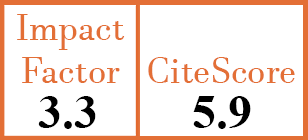Full Papers
The impact of C-reactive protein levels on the effectiveness of upadacitinib in patients with rheumatoid arthritis: a 12-month prospective, non-interventional German study
T. Witte1, U. Kiltz2, F. Haas3, E. Riechers4, U. Prothmann5, D. Adolf6, C. Holland7, A. Rössler8, U. Soppa9, B. Fritz10, K. Götz11, K. Krüger12
- Department of Rheumatology and Clinical Immunology, Hannover Medical School, Hannover, Germany. witte.torsten@mh-hannover.de
- Rheumazentrum Ruhrgebiet, Herne, and Ruhr-University Bochum, Bochum, Germany.
- Internistisch-Rheumatologische Facharztpraxis, Rheumatology, Tübingen, Germany.
- Department of Rheumatology and Clinical Immunology, Hannover Medical School, Hannover, Germany.
- Knappschaftsklinikum Saar GmbH, Püttlingen, Germany.
- StatConsult GmbH, Statistics, Magdeburg, Germany.
- AbbVie Deutschland GmbH & Co. KG, Medical Immunology, Wiesbaden, Germany.
- AbbVie Deutschland GmbH & Co. KG, Medical Immunology, Wiesbaden, Germany.
- AbbVie Deutschland GmbH & Co. KG, Medical Immunology, Wiesbaden, Germany.
- AbbVie Deutschland GmbH & Co. KG, Medical Immunology, Wiesbaden, Germany.
- AbbVie Deutschland GmbH & Co. KG, Medical Immunology, Wiesbaden, Germany.
- Praxiszentrum St. Bonifatius, Rheumatology, Munich, Germany.
on behalf of the UPwArds Study Group
CER16979
2024 Vol.42, N°3
PI 0726, PF 0735
Full Papers
Free to view
(click on article PDF icon to read the article)
PMID: 37976112 [PubMed]
Received: 06/07/2023
Accepted : 26/09/2023
In Press: 15/11/2023
Published: 27/03/2024
Abstract
OBJECTIVES:
We investigated whether the effectiveness of upadacitinib in rheumatoid arthritis (RA) treatment is affected by baseline CRP levels in a real-world setting.
METHODS:
UPwArds was a prospective, non-interventional study. Patients had moderate-to-severe RA and an inadequate response or intolerance to ≥1 disease-modifying anti-rheumatic drug (DMARD). The primary endpoint was clinical remission (Clinical Disease Activity Index [CDAI] ≤2.8) at 6 months. Secondary endpoints at 12 months included clinical remission and low disease activity assessed by CDAI and Simple Disease Activity Index criteria, DAS28-CRP <2.6/≤3.2, and patient-reported outcomes. The impact of baseline CRP levels (normal vs. above the upper limit of normal [ULN]) on primary and secondary endpoints was evaluated. The effect of concomitant MTX and prior inadequate response to biologic or targeted synthetic DMARDs (b/tsDMARD-IR) on the effectiveness of upadacitinib was also assessed. Safety was evaluated through 12 months.
RESULTS:
518 patients were included in the effectiveness analyses. At 6 months, 24.4% of patients achieved the primary endpoint (CDAI ≤2.8). At 12 months, similar proportions of patients with normal CRP and CRP above the ULN at baseline achieved CDAI ≤2.8 (27.3% and 29.1%) and other key secondary endpoints. The effectiveness of upadacitinib was comparable with and without concomitant MTX and in b/tsDMARD-naive and b/tsDMARD-IR patients. The safety results were consistent with the known safety profile of upadacitinib; no new safety signals were identified.
CONCLUSIONS:
Upadacitinib therapy was effective for RA in a real-world setting. Baseline CRP levels had no significant impact on the effectiveness of upadacitinib.



